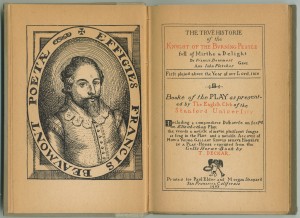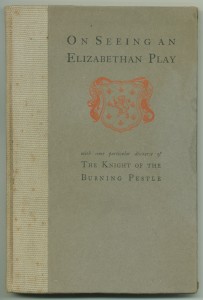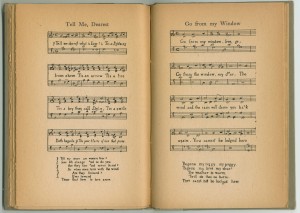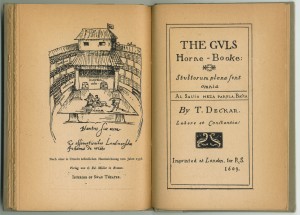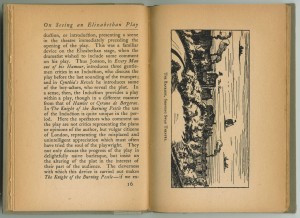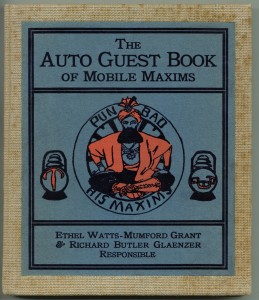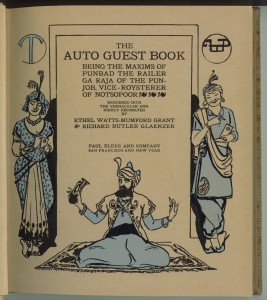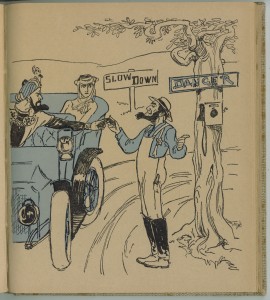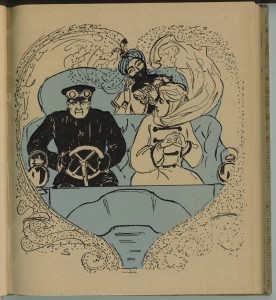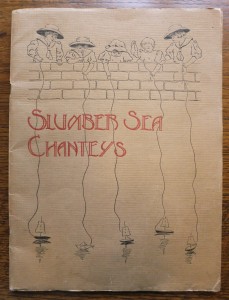
Slumber Sea Chanteys (1910) was the only sheet music Paul Elder ever published (there are a few pages of music in Knight of the Burning Pestle). It is a selection of children’s lullabies on nautical themes. It is also the first Paul Elder I ever bought, though I only realized it five years later when I began to collect Elder in earnest.
Composer Carrie Stone Freeman was profiled in the Music section of the Los Angeles Herald on 4 Dec 1910:
Local composers were well represented at the last meeting of the Harmonia Club Thursday afternoon … Among the songs of special interest to club members were those by Mrs. John J. Abramson, president of the club and hostess for the day, and Carrie Stone Freeman. Mrs. Freeman has written successfully for the voice and her publications include not only the Slumber Sea Chanteys, which are proving so delightful for little folk to sing, but are also most beautiful for the trained singer or a real by-land song, but also “Invitation,” Twilight,” “Lullaby” and “Eastertime Psalm.”
Freeman was also profiled in the Oxnard Courier of 16 Mar 1917:

Carrie Stone Freeman, chairman of music for Southern California Women’s club, has a new theory of learning music from nature. Mrs. Freeman is well known in this section in club work and has visited with clubs in this county many times. This is her advice: Listen to the birds and learn to sing. Try to catch and put into musical notation the clear, vibrant joyous calls of the Meadowlark and the mockingbird. Go where you will, is the big outdoors, land or water, and learn from the greatest music master in the world–Nature.
Here is the unique “teachology” of a brilliant Los Angeles woman who bids fair to catch the eye of the nation with her simple solution for developing one of the primal instincts of man–love of music. She is Carrie Stone Freeman, state chairman of music for the Los Angeles and Southern districts of the California Federation of Women’s Clubs. “Trying to catch the notes of the birds,” said Mrs. Freeman, “not only gives a person the opportunity to learn some of the truest sound values, but it also trains the ear. “Spare moments can be utilized for this study, for instance, while a train stops on a siding, while you are standing waiting for a car, if at some interurban point where the fields are at hand or as you sit in your garden reading or sewing. The birds are everywhere.”
Mrs. Freeman is speaking to club women in almost every part of the state, so popular is her subject proving. Just a few days ago she received a manuscript copy of the new song written by the well known American composer, Mrs. H. H. A. Beach; words by Ina Coolbrith of San Francisco. It is dedicated to Mrs. Freeman and is called “Meadowlark.” The motif of the composition is one of the meadowlark calls which Mrs. Freeman frequently uses in announcing her arrival at the artistic Freeman home at the western terminus of Sixteenth Street. Mrs. Beach heard her using it, while a house-guest, and begged permission to build a song on it.
Asked what she thinks of “ragtime,” Mrs. Freeman said “I don’t think. It was a tidal wave for a while and naturally it is receding. I think it will soon die altogether. I never talk against it. I simply offer something better in its stead.”
Co-author Lucia Chase Bell (1848-1938) also wrote the Elder publication Obil, Keeper of Camels. Her husband, Thomas Cowan Bell (1832-1919), was one of the founders of the Sigma Chi fraternity.
I can find no information about co-author and illustrator Rita Bell James.


